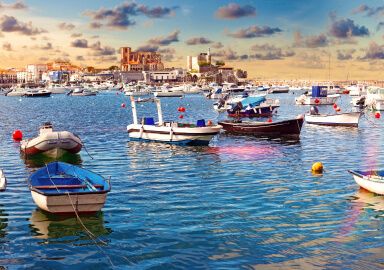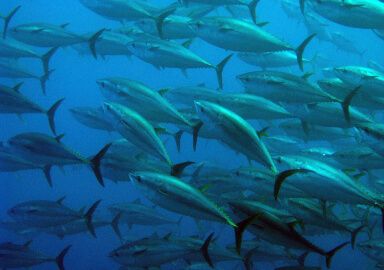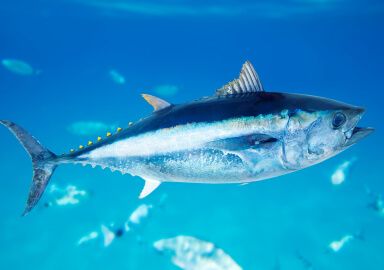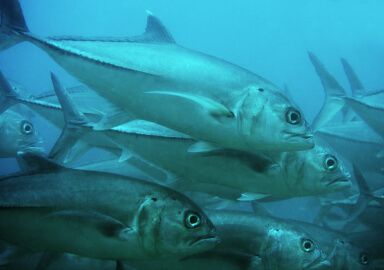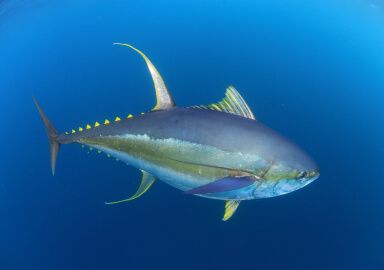Albacore Tuna
Looking like it can be flying on its long pectoral fins, the albacore may not be the biggest member of the tuna family, but one of the most exciting to catch and delicious on the table.
View 30 listings
30
listings
–
price starting from
13
countries
–
to the nearest trip
Where and When?
Albacore tuna are found throughout the temperate and tropical regions of all major oceans: the Atlantic, Pacific, and Indian Oceans, as well as the Mediterranean Sea. They are highly migratory, following warm ocean currents and moving across vast distances. Their distribution varies seasonally, as they travel between spawning and feeding grounds. Albacore tuna typically prefer waters between 15°C and 20°C (59°F to 68°F), and they can be found both in deep offshore waters and nearer the surface at night when they feed. Albacore tuna tend to occupy deeper offshore waters, typically 200 to 400 meters deep, but come closer to the surface at night when prey like squid and small fish are more abundant.
Some of the best places to fish for albacore tuna include the Pacific Coast of the USA, from Washington and Oregon to southern California. New Zealand’s waters are famous for producing large albacore tuna, especially in the Bay of Plenty region. In the Atlantic, the Azores offer deep, nutrient-rich waters, and are prime hunting grounds for albacore tuna. And if you are vacationing in the Mediterranean, particularly in Italy and Spain, don’t miss your chance to cast your line after albacore tuna. Peak fishing seasons generally align with the warmer months, from June to October in the Northern Hemisphere and December to April in the Southern.
About Albacore Tuna
Albacore tuna (Thunnus alalunga) are medium-sized tunas, typically reaching lengths of 0.9 to 1.2 meters (3 to 4 feet) and weighing between 20 and 45 kg (44 to 99 lbs), although larger specimens can exceed these sizes. They have a streamlined, torpedo-shaped body designed for speed in open waters. Albacore tuna are characterized by their long pectoral fins, which can reach nearly half the length of their body, a key feature that distinguishes them from other tuna species. Their body is metallic blue on the back and silvery white on the belly, providing them with camouflage in open ocean environments.
Albacore tuna reach sexual maturity at about 5 to 6 years of age. Different populations spawning at different times of the year. For example, in the Pacific Ocean, albacore tuna spawn from March to July, while in the Atlantic spawning occurs from May to September. The adult albacore tuna are carnivorous, feeding primarily on small fish, as well as squid and other cephalopods. They are opportunistic feeders and can dive to depths of up to 600 meters (2,000 feet) in search of prey, although they typically feed closer to the surface at night. These fish need a lot of food to sustain their high-energy needs.
How to Catch?
Albacore tuna are often found in deeper offshore waters, so anglers should be prepared for long runs out to sea. The most common method is trolling, with speed of around 5 to 7 knots. These fish tend to school, so once one fish is hooked, it’s common to encounter a flurry of activity, which can lead to multiple catches in quick succession. Keeping a variety of lures, such as feather jigs, plastic squid, or metal spoons deployed at varying depths to increase the chances of a strike, as albacore may feed at varying levels in the water column. Once hooked, albacore tuna put up a powerful fight and tend to make long, fast runs. It’s important to maintain a steady, controlled retrieval, and of course heavy tackle is essential.
Success in albacore tuna fishing also depends on finding the right conditions. Albacore are migratory and often follow temperature breaks, areas where warm and cooler waters meet, as these zones attract baitfish. Paying attention to water temperatures and using fish finders can help locate schools of tuna. Anglers often have the best luck in the early morning or late afternoon when tuna are actively feeding near the surface. Local knowledge is essential, and the best way to catch albacore tuna is to hire a charter boat with an experienced captain and crew.

